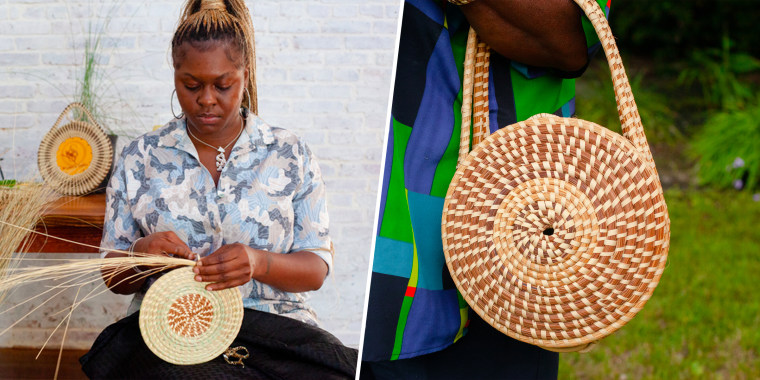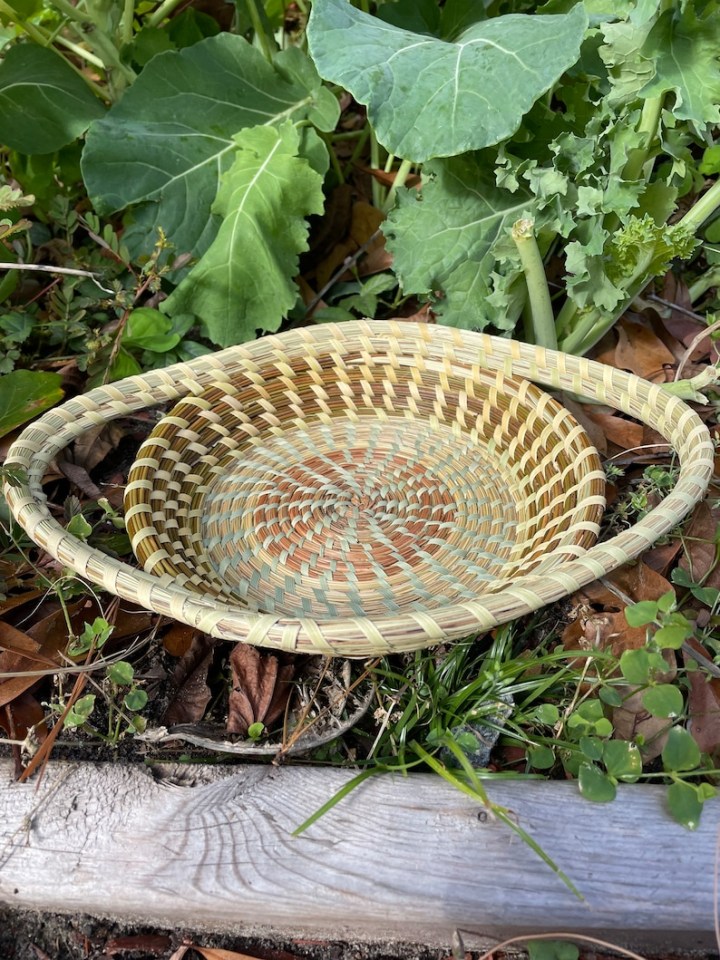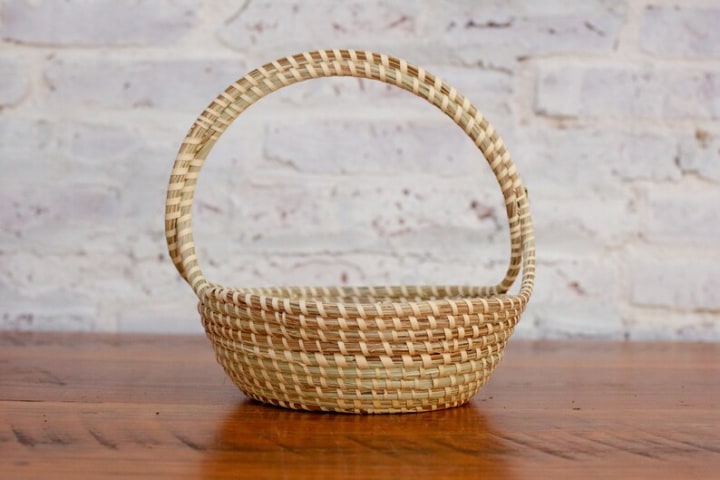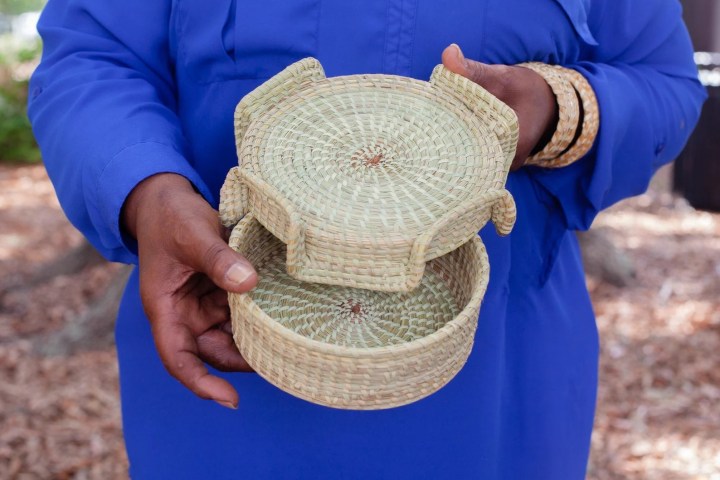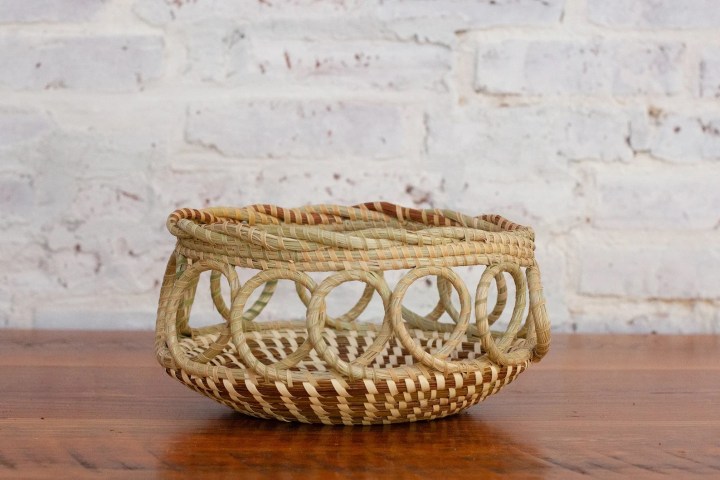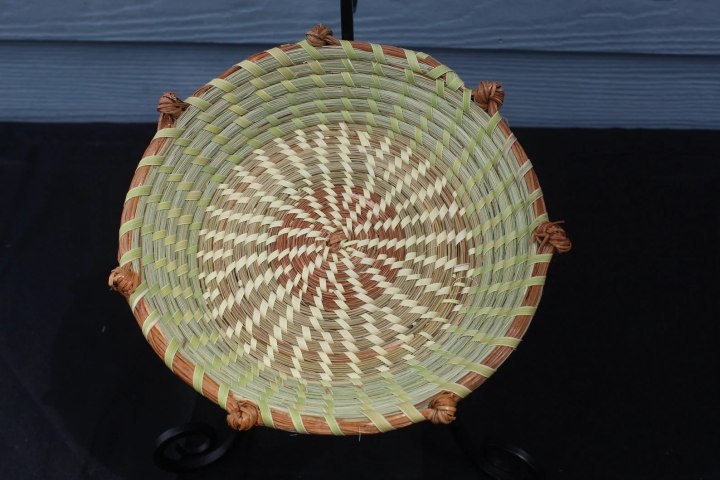For Andrea "Annie" Cayetano-Jefferson, a sixth-generation Gullah-Geechee basket artisan, the practice of intricately sewing together sweetgrass, bulrush, pine needles and palmetto into unique designs is an inherited “way of independence.”
“I’m doing it the same way people have been for literally hundreds of years," Cayetano-Jefferson tells Shop TODAY in an interview. “The same way my ancestors have been doing it.”
Formerly hidden in the city of Charleston, South Carolina, Gullah basket weaving is one of the earliest African craft traditions in the United States, Etsy spokesperson Alyssa McEwan told us in an email. When enslaved West African rice farmers were brought to North Carolina in the 1700s, the practice followed; birthing over ten generations of artisans like Cayetano-Jefferson, who began sewing at age five.
“I feel like it literally is an artifact,” Cayetano-Jefferson says. "My grandmother had a third-grade education, but she made the most beautiful baskets in the world. My mom raised five of us on baskets. It definitely put all of us where we are today.”
Once upon a time, it was the women who “weren’t so lucky” who made baskets for a living, Cayetano-Jefferson told us. Before the nation caught onto the beauty and significance of this 300-year-old practice, baskets were sold exclusively at the Charleston City Market and the Gullah-Geechee weaving community struggled with visibility, recognition and making a living.
“My mom used to sell them for 10 and 15 cents,” she continued. “To go to the city market, you have to take all of your things down there, set up, and take it back home every day and that didn’t necessarily mean you made money. Sometimes there would be months that we’d go down to the market and make no sales.”
Now Cayetano-Jefferson and other weavers make nearly $300 per basket selling them on Etsy through the brand's Uplift Initiative, a set of programs intended to generate opportunities for creative entrepreneurs, according to the site. Etsy, in partnership with non-profit Nest, brought the basket weavers on as part of its Uplift Initiative.
Cayetano-Jefferson says the transition from Charleston’s city market to Etsy has positively impacted both her and the Gullah-Geechee basket-weaving community.
“We went through a lot to get to where we are right now," Cayetano-Jefferson tells Shop TODAY. “To be appreciated and recognized for what we do is mind-blowing, it makes me feel proud to be Gullah-Geechee. People are like ‘oh’ you do that?’ and I’m like yeah, I’ve been doing this forever.’ It’s nothing to me.”
How do you basket weave?
The baskets are made from locally grown sweetgrass, bulrush, pine-needle, and palmetto. Therefore, nothing can be found in stores and requires heavy preparation and harvesting.
“The process starts with actually gathering the materials — which everything grows wild," Cayetano-Jefferson tells Shop TODAY. “Everything starts off green, and depending on what time of the year, that’s the color your pine needles and bulrush would be. And then the sweetgrass — three of four months out of the summer we harvest it to stockpile enough for the year.”
The places to gather and harvest materials are passed down from generation to generation, but recent challenges with infrastructure posed threats to the weaving community's access to plants.
“We used to be able to walk out in the backyard and gather but the bulrush grows where people want to live so we’re having challenges," Cayetano-Jefferson says. “People moving into the areas don’t know about the baskets. My grandmother was born in 1919, we can date back that far, we know for sure our family have been making baskets and gathering on these same places.”
As a community, Cayetano-Jefferson and other weavers in the Charleston area dedicate time to sourcing materials and helping each other.
All baskets are handwoven, and she says, 10-12 hours of labor go into sewing one medium-sized bread basket — her personal favorite, and fan-favorite (it's the bestseller on her Etsy store). Sharing the sewing efforts with her mother and daughter, Cayetano-Jefferson says they mostly work independently but join forces on "huge orders."
Scroll below to shop some of Cayetano-Jefferson's favorite and bestselling baskets.
Gullah-Geechee baskets
Bread Basket
This is a favorite of Cayetano-Jefferson. "Each person would do different designs and my design is always bread baskets, she says. "I am excellent at it, so that’s my favorite one to make.”
A popular seller for Cayetano-Jefferson, she can receive anywhere from three to 10 sales on Etsy each week, she told us.
Easter Basket
This design is timeless, elegant, and versatile — suitable for Easter or really any season. Stuff it with chocolate bunnies in April, decorate it with red ribbons and fill with cookies for Christmas, or just keep it stocked with fruits all year round. The possibilities are endless!
Sweetgrass Elephant Ears Covered Basket
According to Etsy, this two-piece basket is a bestseller. Intricately designed, this covered basket makes a great jewelry holder or other catch-all.
Fruit Basket
Designed to hold fruit, this basket features looped spiral rings along its perimeter. It's perfect for the kitchen counter or dining room table.
Gullah Love Basket
This one-of-a-kind 8-inch basket features three stitch patterns. It's large enough to store fruits, bread, or any other grocery in your kitchen, or to act as a mail basket in your entryway.
Editor's Note: A previous version of this incorrectly identified North Carolina.
